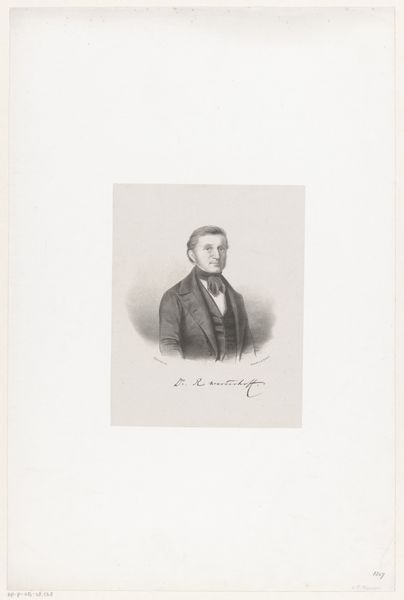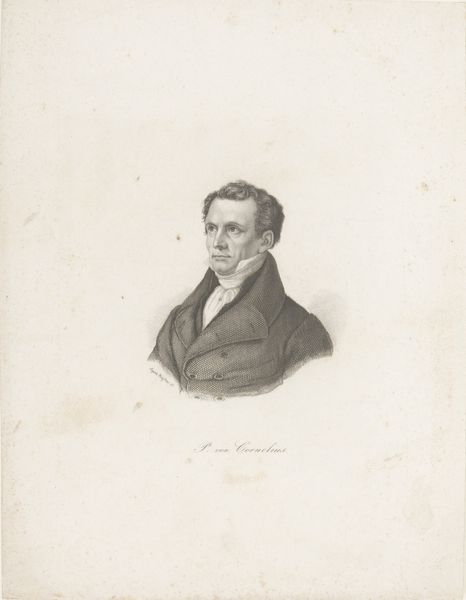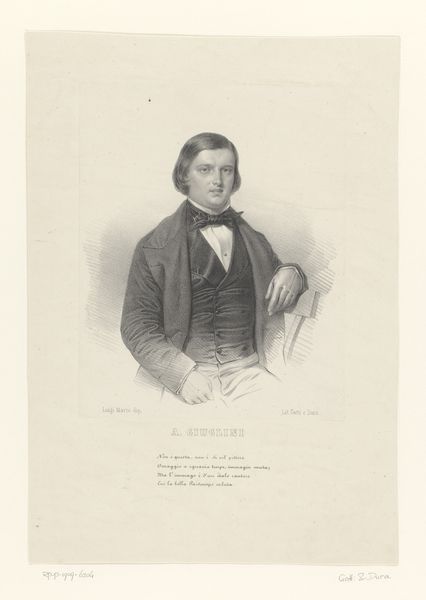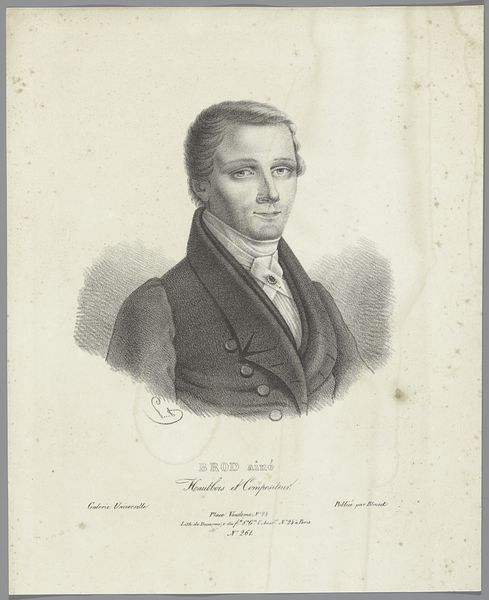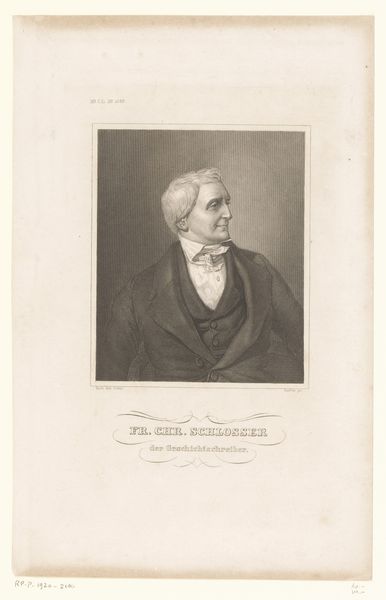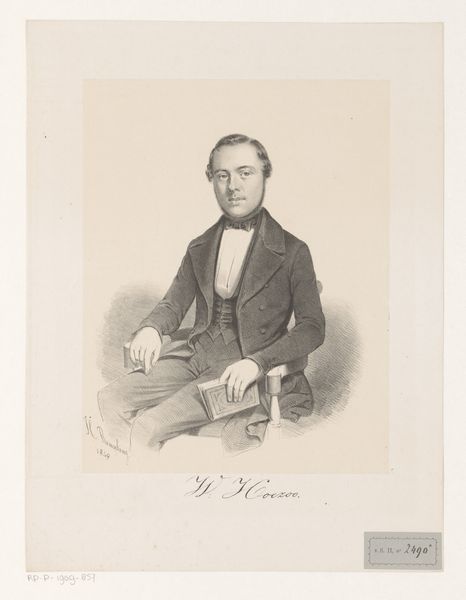
lithograph, print
#
portrait
#
lithograph
# print
#
academic-art
#
realism
Dimensions: 312 mm (height) x 241 mm (width) (bladmaal)
Curator: Here we have a lithograph from 1840 by Johann Martin Graack, titled “Ditlev Petersen”. It's currently held in the collection of the SMK, the National Gallery of Denmark. Editor: He looks terribly serious, doesn’t he? A little imposing. The way the light catches his brow makes him seem almost severe, like a headmaster about to hand down a punishment. Curator: Yes, there is a gravity to the image. This style of portraiture, very much in line with academic art, often sought to convey a sense of dignity and perhaps intellectual prowess. The print as a medium was of course more widely accessible, democratising the distribution of one's image. We can observe conventions typical to academic art - the subdued color palette, its adherence to realism. But it may also express the sitter's professional aspirations and the way he wishes to be remembered by posterity. Editor: Absolutely, and there's something intriguing about the symbolism here, even if it's subtle. That cravat tied so meticulously, the hint of waistcoat beneath his jacket, these are signals of respectability, of a life lived according to certain codes. Is this Petersen trying to embody some kind of ideal? A romantic hero, maybe, rendered in grayscale? Or just your everyday, stern, mid-19th century academic? Curator: Indeed, dress and pose were all carefully considered. Every aspect served a purpose of cultural signaling to a nineteenth century viewer. His gaze is direct, his posture upright, speaking to a man of principle and self-assurance, which suggests, if anything, his self-perception rather than romanticism. Editor: There's such weight in this simple print. One wonders about his inner world – all those hidden thoughts, dreams, and worries sealed away behind that stern facade. It's funny how much emotion can be wrung from black and white, isn't it? The lack of color feels almost like a stripping away, a reduction to essential self. Curator: Precisely, it leaves room for our interpretation. We look to portraits to find connections to historical memory, using their faces as portals. They act as powerful symbolic reminders, carrying not just the image of a man, but an entire epoch within them. Editor: Well, this little sojourn has certainly put me in a contemplative mood. Who knew a simple portrait could unlock so many avenues of thought! Curator: Indeed. Each element of the lithograph prompts a re-examination of how symbols carry emotional, cultural and historical weight over time.
Comments
No comments
Be the first to comment and join the conversation on the ultimate creative platform.






